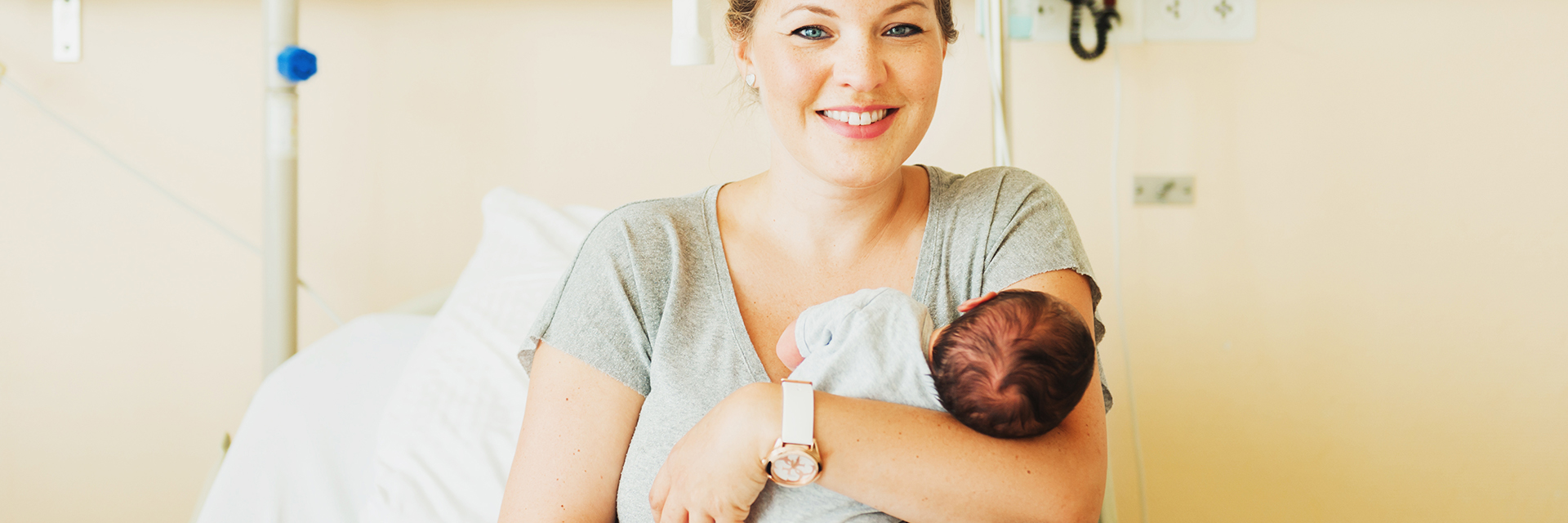Beyond the temporary soreness following a vaginal or cesarean delivery, there are other side effects to be aware of after childbirth:
Contractions – You might feel menstrual cramp-like contractions in the early days after delivery, particularly if you’re breastfeeding. Ask your healthcare provider about an over-the-counter pain reliever for this.
Incontinence – Childbirth stretches your pelvic floor muscles and that can result in urine leakage, especially when laughing, coughing or sneezing. Incontinence can also result from a C-section.
How to cope:
- Wear sanitary pads for a while to catch the urine.
- Do Kegal exercises—tightening and releasing the pelvic muscles (around your vagina) for a count of 3 seconds each. Try to do this 12–15 times in a row at least 3 times a day.
Hemorrhoids – These are swollen veins in the anus or rectum that can be very uncomfortable and make bowel movements painful. For relief:
- Apply an over-the-counter hemorrhoid cream.
- Wipe the anal area gently with pads containing witch hazel.
- Soak the anal area in warm water for 10 to 15 minutes 2 or 3 times a day.
- To keep bowel movements regular and soft, eat high-fiber foods (fruit, vegetables and whole grains), drink plenty of water and use a stool softener if necessary
Tender breasts and leaking nipples – Your breasts may sometimes feel full, very firm and uncomfortable in the days just after childbirth. You may notice milk sometimes leaking from your nipples.
- If you are breastfeeding, try pumping or manually expressing some milk before nursing your baby to ease the fullness and make it easier for the baby to latch.
- If you are not breastfeeding, wear a supportive bra and don’t express any milk, since this would encourage your breasts to make more.
Hair loss and skin changes – After childbirth, you’ll notice some hair loss for several months. It’s normal after the increase in hair growth during pregnancy. Any stretch marks on your skin from pregnancy will eventually fade from red to silver. Other dark skin patches that appeared in pregnancy will also gradually fade.
Mood swings – Hormone levels change dramatically after childbirth, resulting in temporary feelings of sadness (crying spells, too), anxiety and trouble sleeping. These “baby blues” typically last a week or 2. Talking about them with your partner, family or friends can help.
Severe mood swings, sadness, a loss of appetite and a lack of joy that lasts more than several days, however, could indicate postpartum depression. Talk with your healthcare provider about this, especially if it interferes with caring for yourself and your baby or prompts thoughts of harming yourself or your baby. Postpartum depression affects up to 20% of mothers, is not your fault and is treatable. So don’t wait—ask your healthcare provider for help.
Excess weight – Most moms lose about 13 pounds during childbirth (weight from the baby, placenta and amniotic fluid). Don’t expect that to put you right back to your pre-pregnancy weight. A healthy diet and regular exercise will help you lose the remaining weight; be patient—it can take several months.
See also ...
This message is not intended to provide individual medical advice. Always seek the advice of a physician or qualified healthcare provider for any questions you have about your health or medical condition, your breastfeeding issues and your infant's health. Never disregard, avoid or delay contacting a doctor or other qualified professional because of something you have read in our emails, webpages or other electronic communications.
Powered by UbiCare

